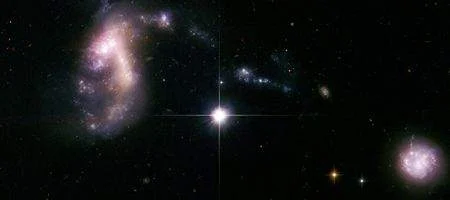There’s slow developers everywhere, and the Hubble space telescope has discovered the astronomical equivalent: a group of small, ancient galaxies that have waited 10 billion years to get round to building a large elliptical galaxy.
Such encounters between dwarf galaxies are normally seen billions of light-years away and therefore occurred billions of years ago. But these galaxies, members of Hickson Compact Group 31, are relatively nearby, only 166 million light-years away.

“Most other dwarf galaxies like these interacted billions of years ago, but these galaxies are just coming together for the first time. This encounter has been going on for at most a few hundred million years, the blink of an eye in cosmic history,” says astronomer Sarah Gallagher of The University of Western Ontario.
“It is an extremely rare local example of what we think was a quite common event in the distant universe.”
Hubble reveals that the brightest clusters, each of which holds at least 100,000 stars, are less than 10 million years old. A measurement of the gas content shows that very little has been used up.
“This is a clear example of a group of galaxies on their way toward a merger because there is so much gas that is going to mix everything up,” Gallagher says.
“The galaxies are relatively small, comparable in size to the Large Magellanic Cloud, a satellite galaxy of our Milky Way. Their velocities, measured from previous studies, show that they are moving very slowly relative to each other, just 134,000 miles an hour (60 kilometers a second). So it’s hard to imagine how this system wouldn’t wind up as a single elliptical galaxy in another billion years.”
Adds team member Pat Durrell of Youngstown State University: “The four small galaxies are extremely close together, within 75,000 light-years of each other — we could fit them all within our Milky Way.”
The slow pace of devlopment may be because the system resides in a lower-density region of the universe, says Gallagher. Getting together took billions of years longer than it did for galaxies in denser areas.






